Rare hornet moth colony found at BGS Keyworth
A colony of these rare clearwing moths has recently been discovered on site at the BGS headquarters in Keyworth.
03/10/2023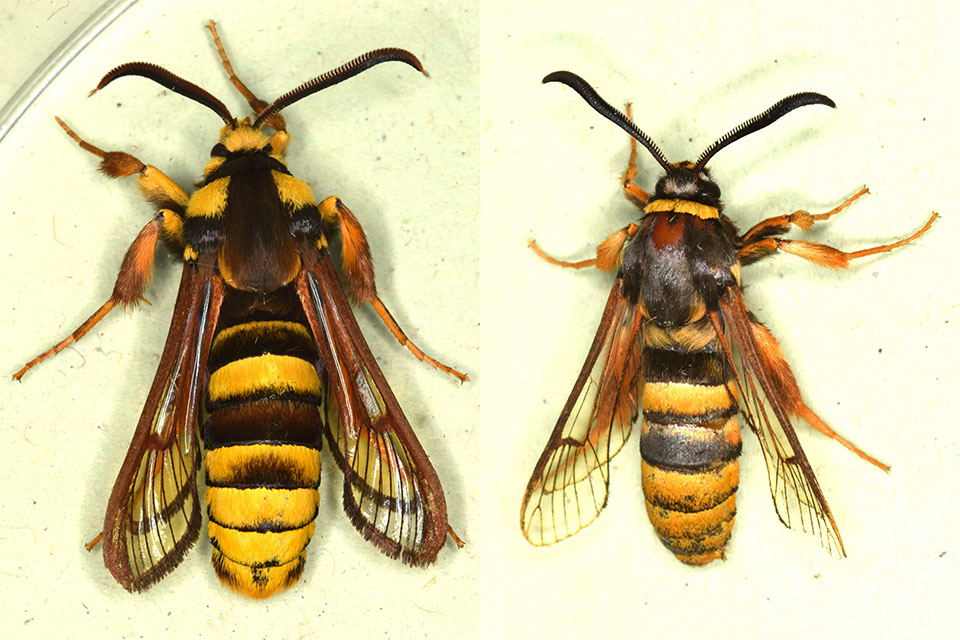
The BGS site at Keyworth has been progressively rewilded in recent years and there’s been an increasing interest from staff in recording the nature present. During a recent survey for clearwing moths, a single hornet moth boring was discovered in the buttress root of a Lombardy poplar tree. The hornet moth is a species of clearwing moth; three other clearwing species had already been recorded at the site using pheromone lures, but the presence of the rare hornet moth had not been suspected — even though there are several established poplar trees including aspen, Lombardy and black poplar, which are all potential host trees.
As this is only the third known site of a hornet moth colony in Nottinghamshire and there are fewer than 10 known in the East Midlands, the moth is classified as scarce nationally. This colony lies near the present northern limit of the hornet moth in Britain.
With the discovery of the first boring, closer examination of the bases of nearby poplars revealed a total of over 60 similar borings on five individual Lombardy and black poplar trees. The dense clusters of these borings almost give the appearance that the root-bole of the trees have been sprayed with bullets or resembles a Swiss cheese! Part of an extruded hornet moth pupal case was also found proving very recent (2023) activity in the colony. Subsequently, a single adult male hornet moth was attracted to a pheromone lure.
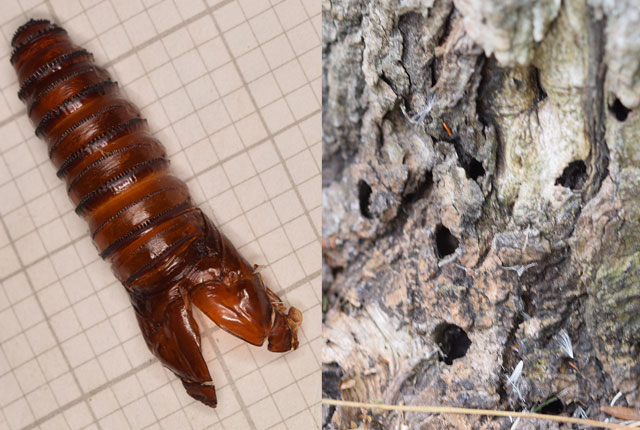
A complete extruded pupal case about 3 cm in length (left) and a cluster of borings at the base of a poplar (right). © Steve Mathers
In terms of lifecycle, adult hornet moths emerge to fly and mate in June and July each year. The females rarely fly far and deposit their eggs near the base of trees of their host species, which hatch into caterpillars (larvae) that then grow and develop for two to three years. During this time, they bore a tunnel up to 10 cm long into the base of the host tree. Finally, they move to the tunnel entrance and pupate before finally emerging as an adult moth. As they emerge, the moths extrude their larval case from the boring.
Pheromone lures
The use of pheromone lures to detect moths and clearwing species has taken off in recent years in Britain. Small rubber bungs or plastic vials are impregnated with pheromones that match those released by the female clearwings to attract mates. These sources slowly release the chemical attractant, creating a plume of scent in a downwind direction. Once detected, the male flies to the source to investigate. The lures can be placed in muslin bags or into the basket in the roof of a trap. Pheromone lures have long been used in mainland Europe to capture pest clearwing species that infest fruit crops such as currants and raspberries. Their widespread use in Britain is more recent.
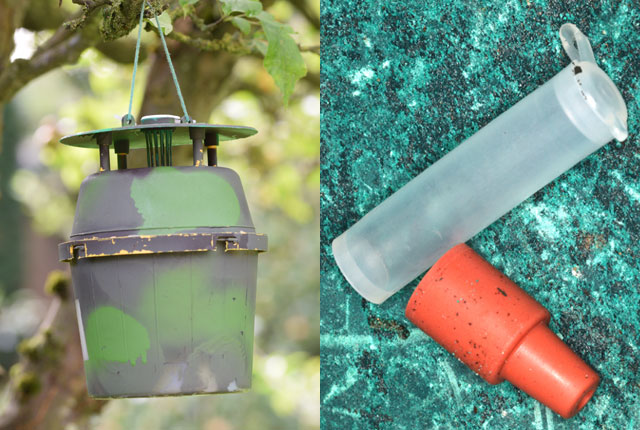
A camouflaged pheromone lure trap (left) and rubber bung and plastic vial lures impregnated with the pheromones (right). © Steve Mathers
Clearwing moths
Clearwing moths are named for their transparent wings, which resemble leaded stained-glass windows. In all there are about 15 species of clearwings found today in Britain and, with the recent increased use of pheromone lures, their distributions are becoming better defined. In addition to the hornet moth, the similar lunar hornet moth, which favours willow trees, has been recorded at BGS Keyworth. Both species are hornet mimics with bold yellow and black markings, but they lack the very narrow waists of true hornets between the thorax and abdomen and possess feathered antennae.
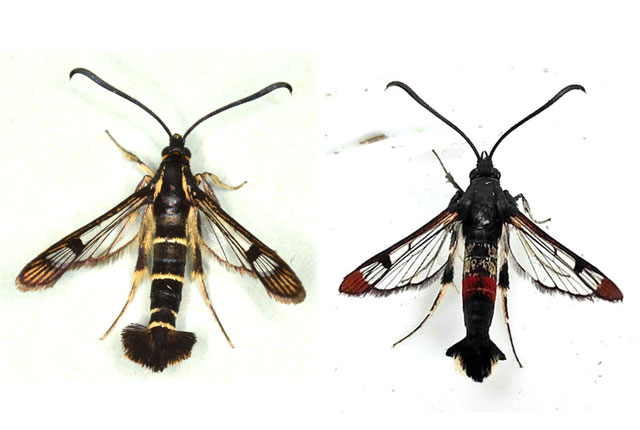
The currant clearwing (left) and red-tipped clearwing (right) moths have also been recorded at BGS Keyworth. These delicate moths have wingspans of 20-25mm, so they are much smaller than the two Hornet Moth species. © Steve Mathers
Two further clearwing species, the red-tipped (another willow species) and the currant, have been recorded at BGS to date. Lunar hornet moths and red-tipped clearwing are found along many of the willow-lined streams draining the wolds of south Nottinghamshire north towards the River Trent and along the Grantham Canal. Just such a stream is found immediately behind BGS Keyworth and is no doubt the home ground for these two species. The currant clearwing occurs widely, most commonly in gardens and allotments with currant bushes.
About the authors

Stephen Thorpe
Geospatial data specialist and lead driller
Steve Mathers
Steve Mathers is a former BGS Geologist and the butterfly county recorder for Nottinghamshire.
Relative topics
Latest blogs
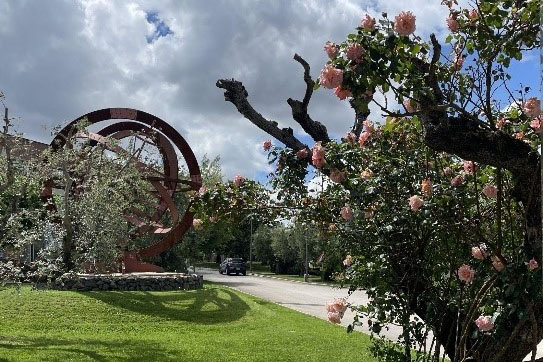
AI and Earth observation: BGS visits the European Space Agency
02/07/2025
The newest artificial intelligence for earth science: how ESA and NASA are using AI to understand our planet.
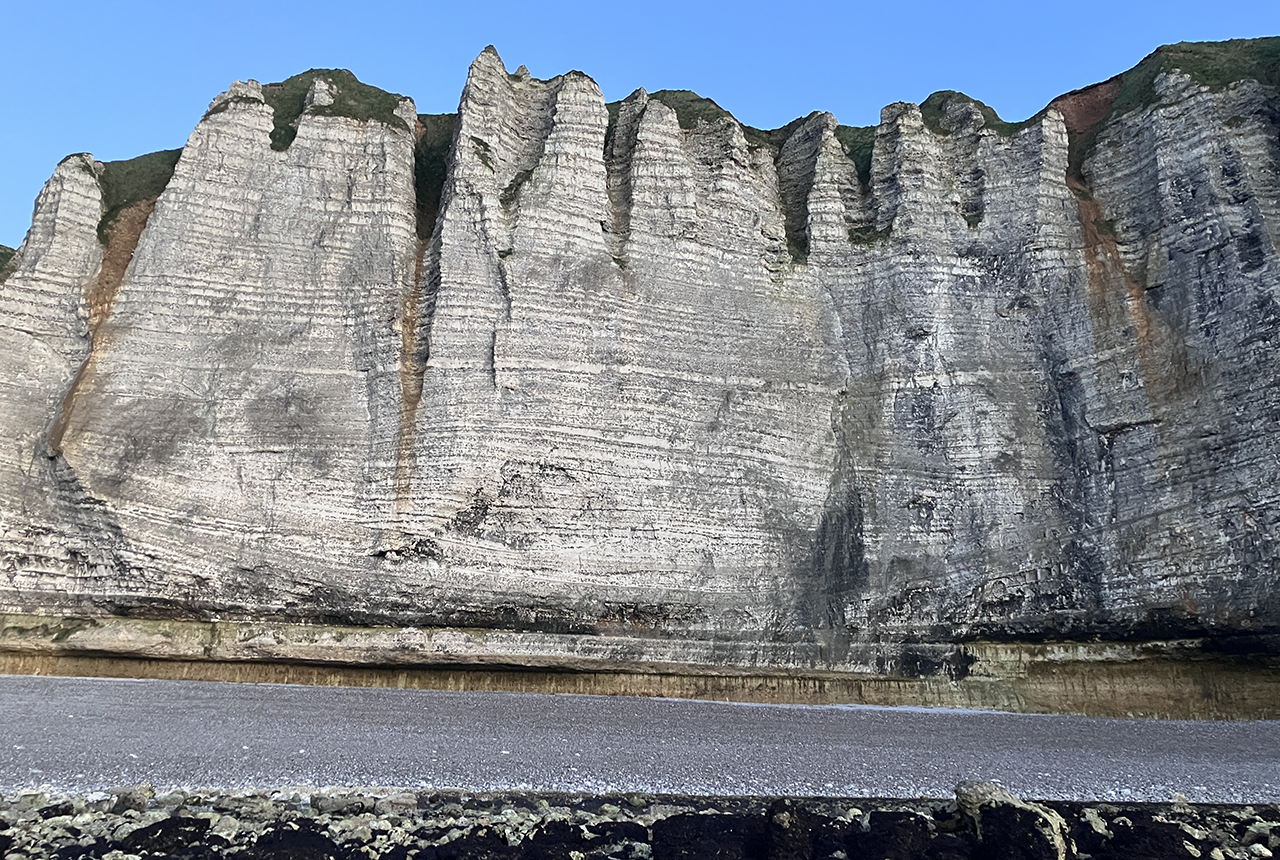
Geology sans frontières
24/04/2025
Geology doesn’t stop at international borders, so BGS is working with neighbouring geological surveys and research institutes to solve common problems with the geology they share.
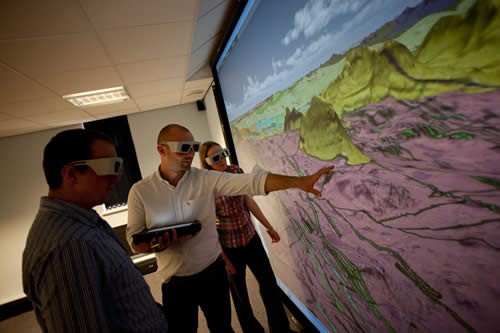
Celebrating 20 years of virtual reality innovation at BGS
08/04/2025
Twenty years after its installation, BGS Visualisation Systems lead Bruce Napier reflects on our cutting-edge virtual reality suite and looks forward to new possibilities.
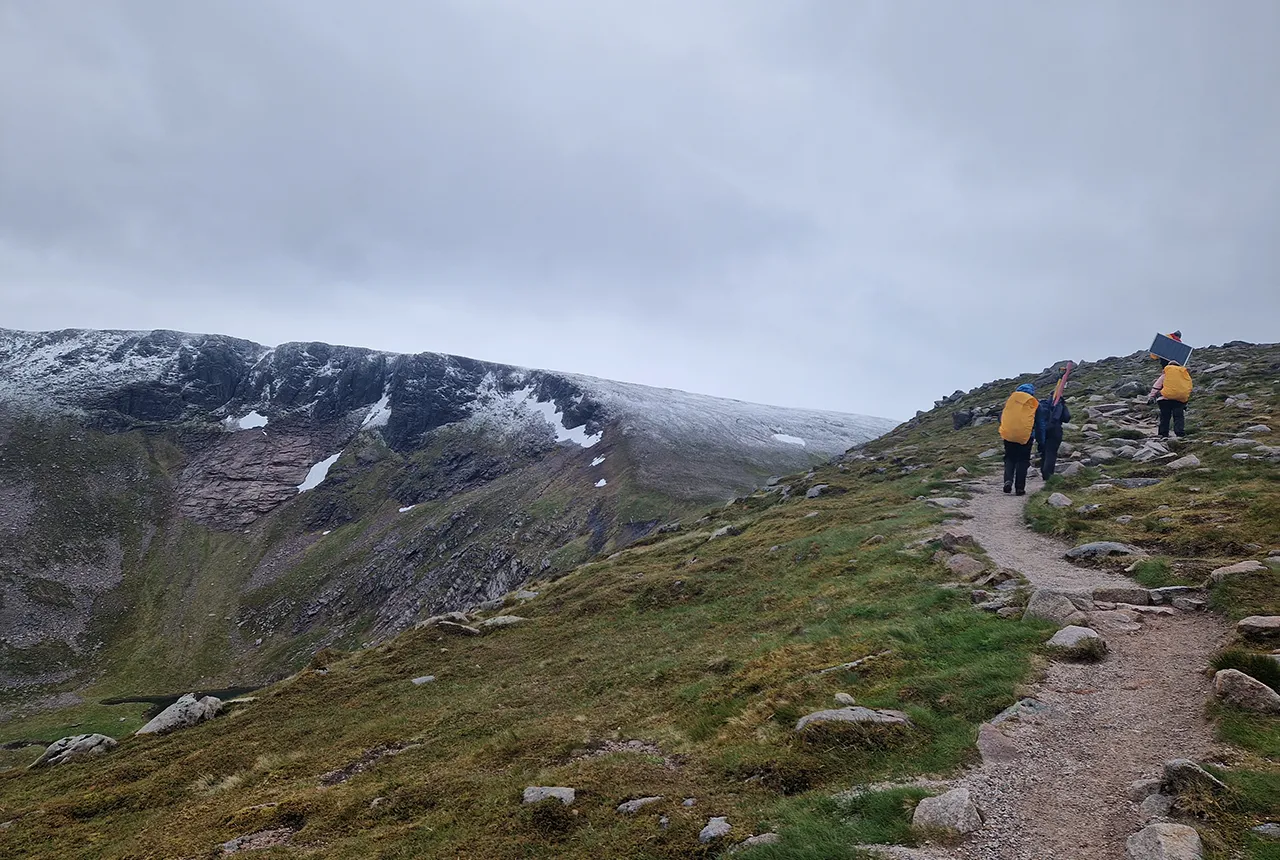
Exploring Scotland’s hidden energy potential with geology and geophysics: fieldwork in the Cairngorms
31/03/2025
BUFI student Innes Campbell discusses his research on Scotland’s radiothermal granites and how a fieldtrip with BGS helped further explore the subject.
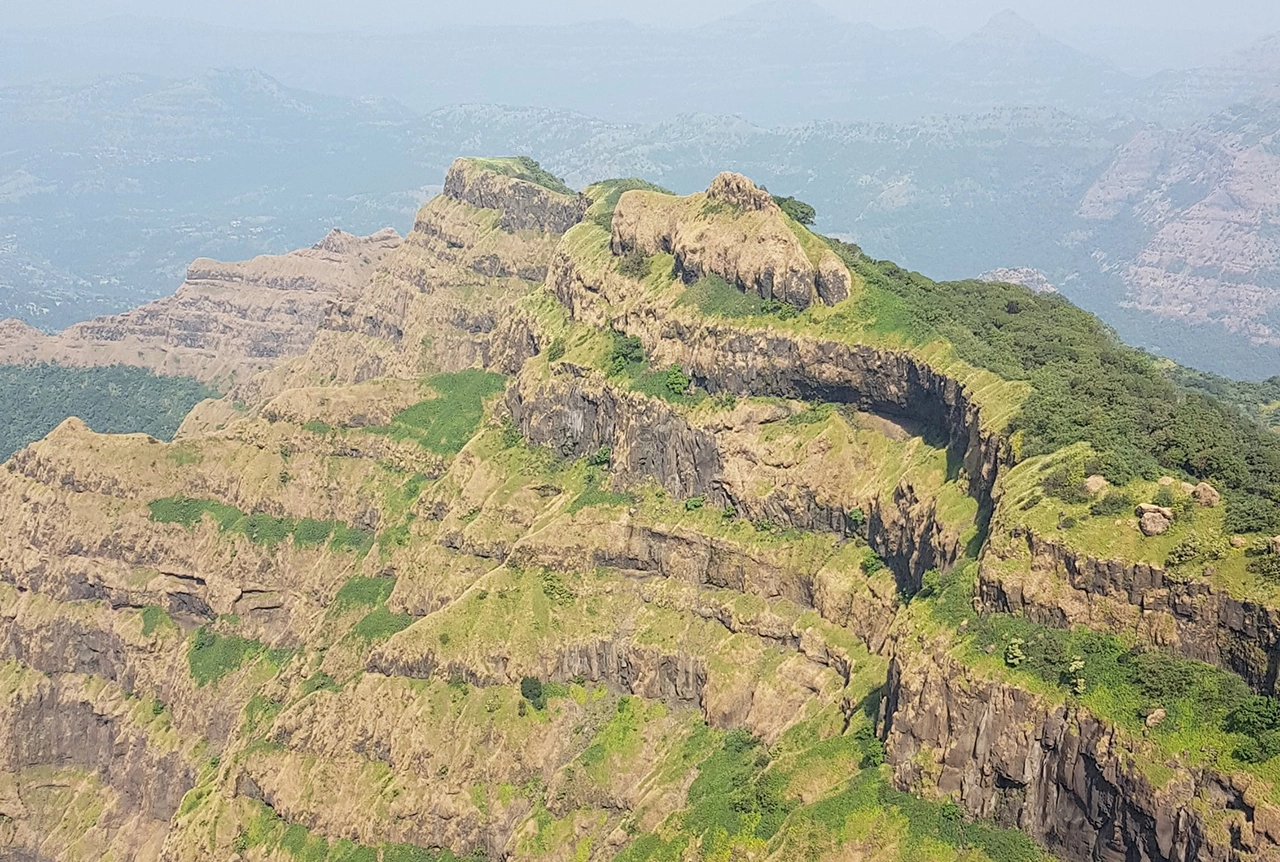
Could underground disposal of carbon dioxide help to reduce India’s emissions?
28/01/2025
BGS geologists have partnered with research institutes in India to explore the potential for carbon capture and storage, with an emphasis on storage.
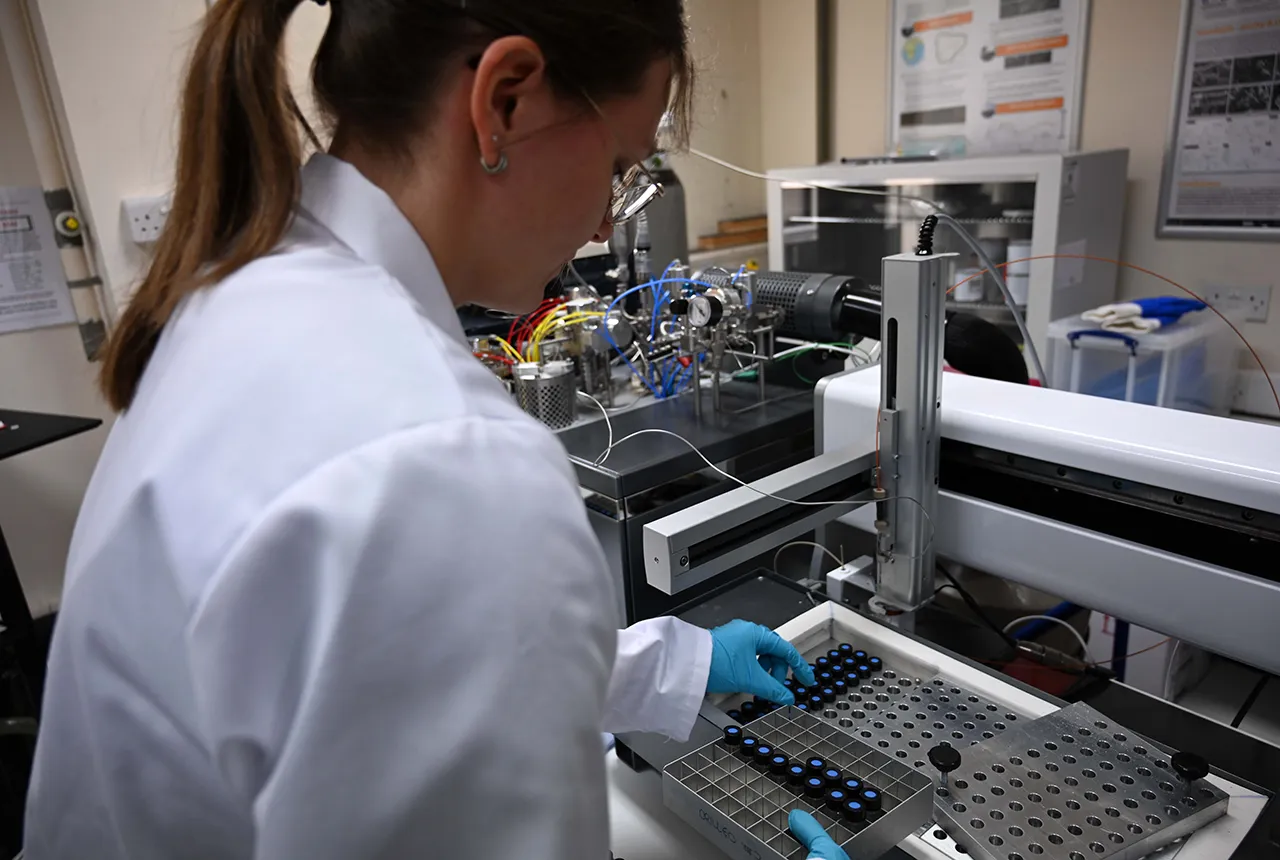
Carbon and oxygen isotope analysis of carbonates and the development of new reference materials
18/12/2024
Dr Charlotte Hipkiss and Kotryna Savickaite explore the importance of standard analysis when testing carbon and oxygen samples.
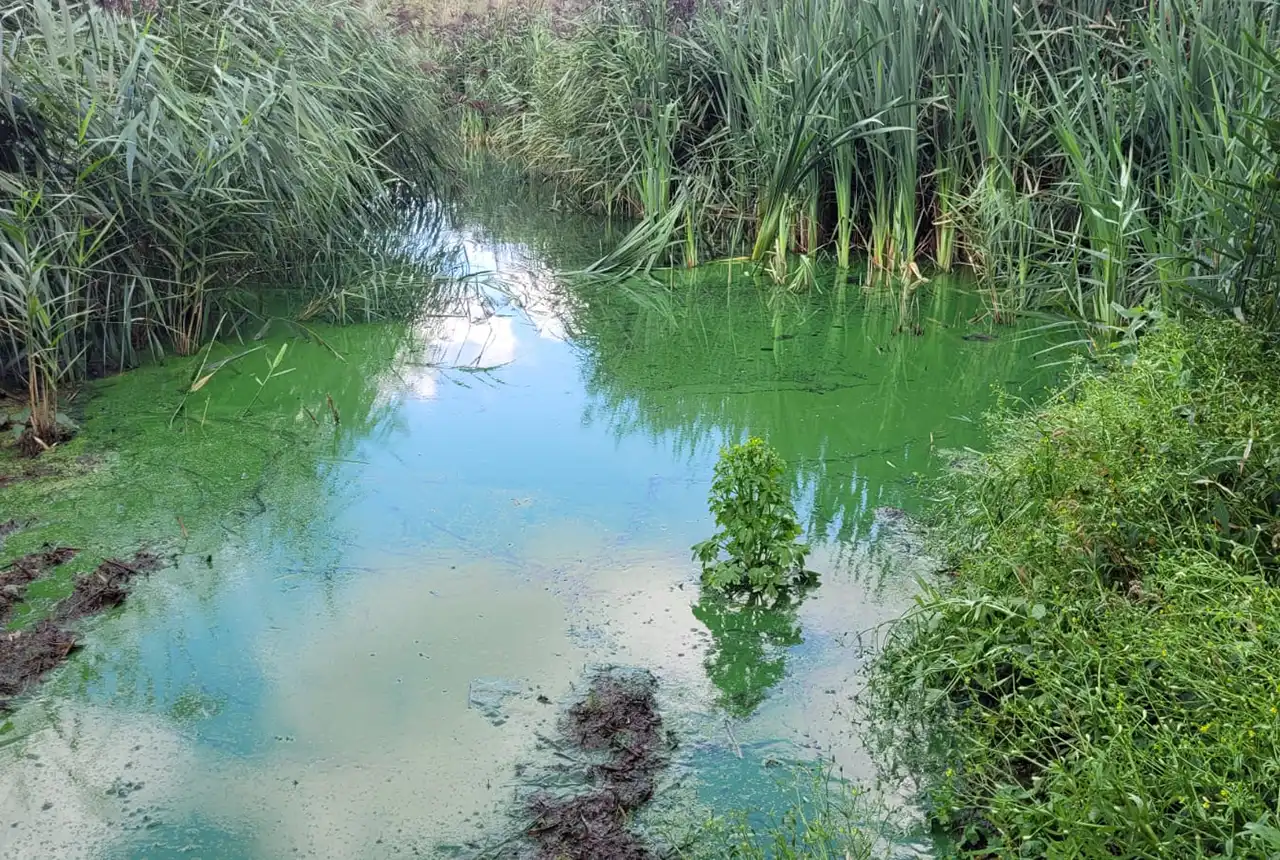
Studying oxygen isotopes in sediments from Rutland Water Nature Reserve
20/11/2024
Chris Bengt visited Rutland Water as part of a project to determine human impact and environmental change in lake sediments.
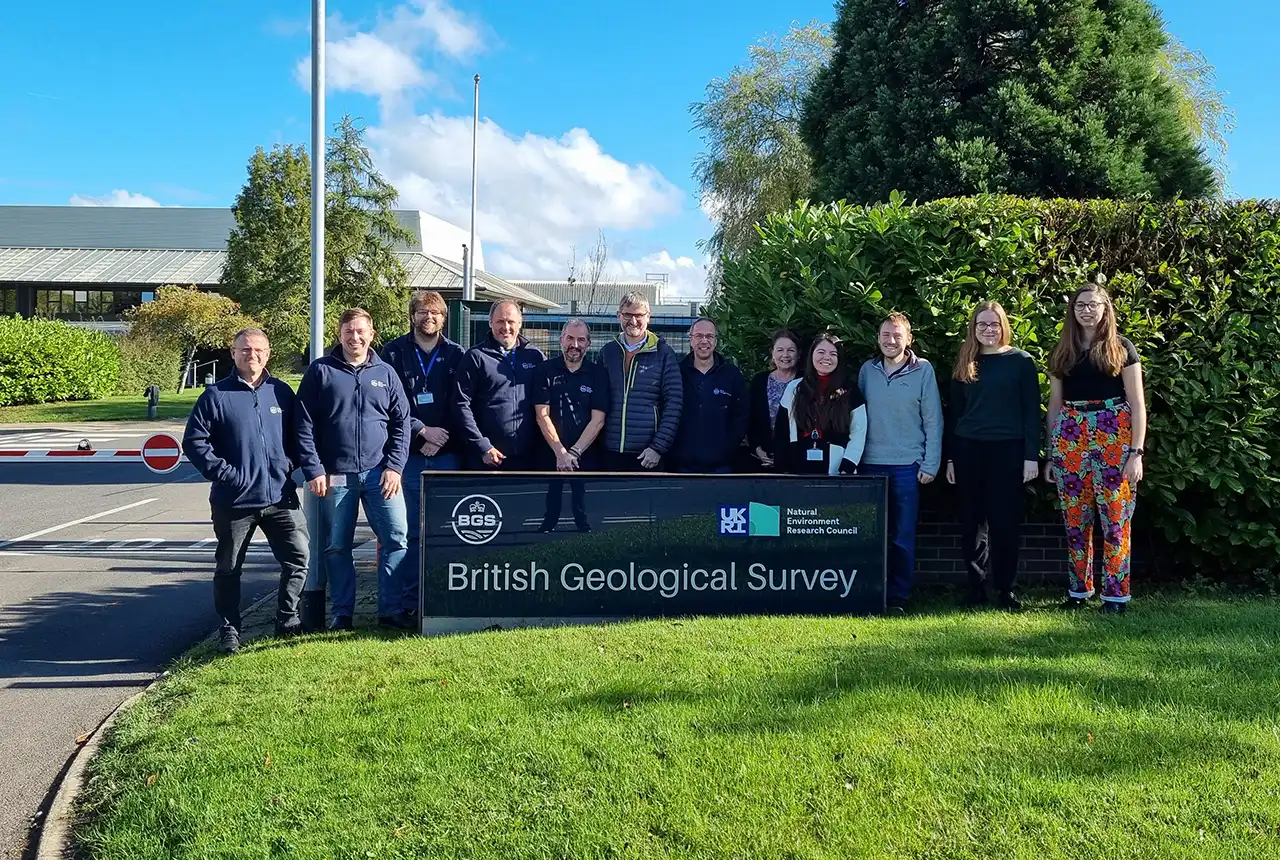
Celebrating 25 years of technical excellence at the BGS Inorganic Geochemistry Facility
08/11/2024
The ISO/IEC 17025 accreditation is evidence of technical excellence and reliability, and a mark of quality assurance.

Electromagnetic geophysics in Japan: a conference experience
23/10/2024
Juliane Huebert took in the fascinating sights of Beppu, Japan, while at a geophysics conference that uses electromagnetic fields to look deep into the Earth and beyond.
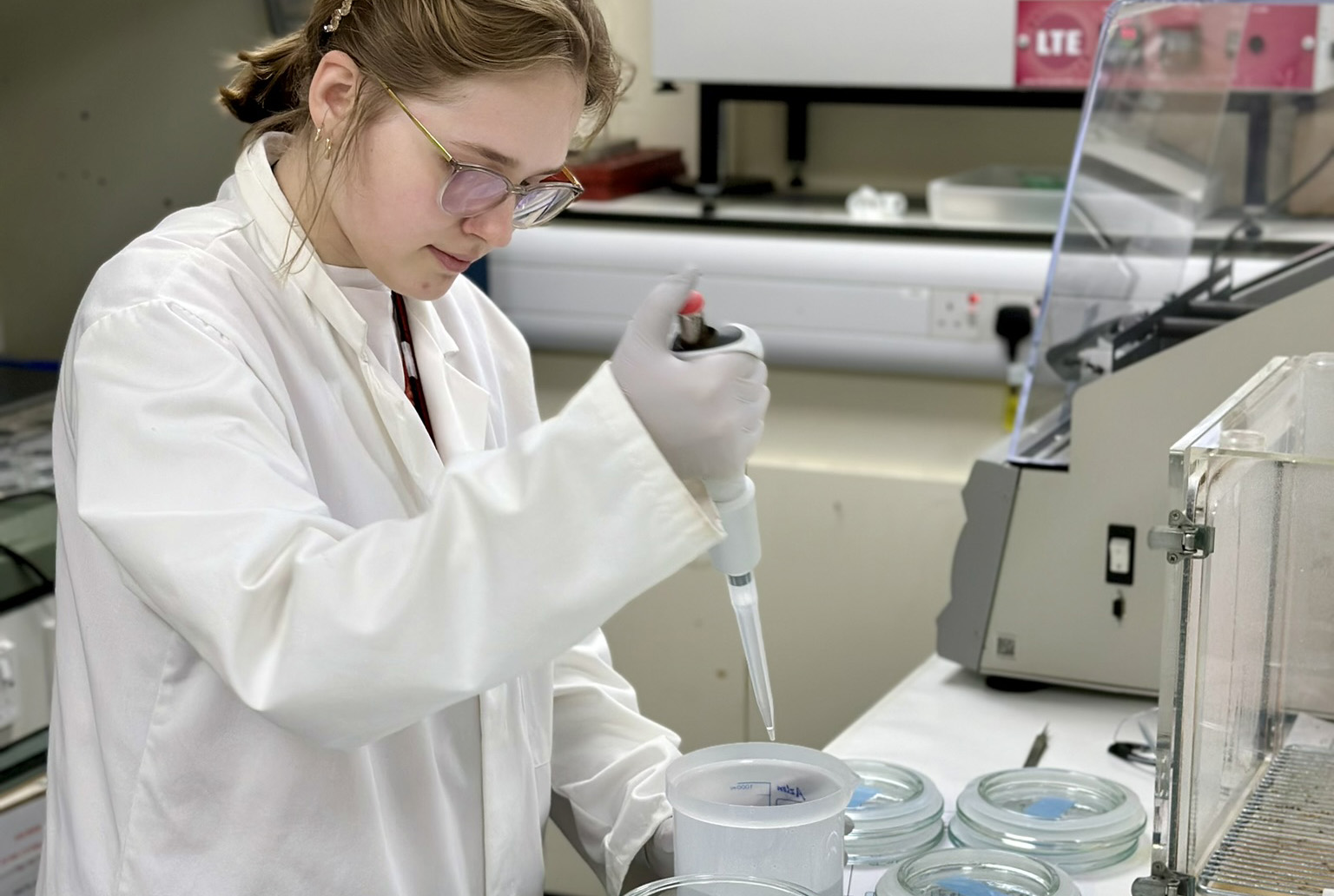
Exploring the role of stable isotope geochemistry in nuclear forensics
09/10/2024
Paulina Baranowska introduces her PhD research investigating the use of oxygen isotopes as a nuclear forensic signature.
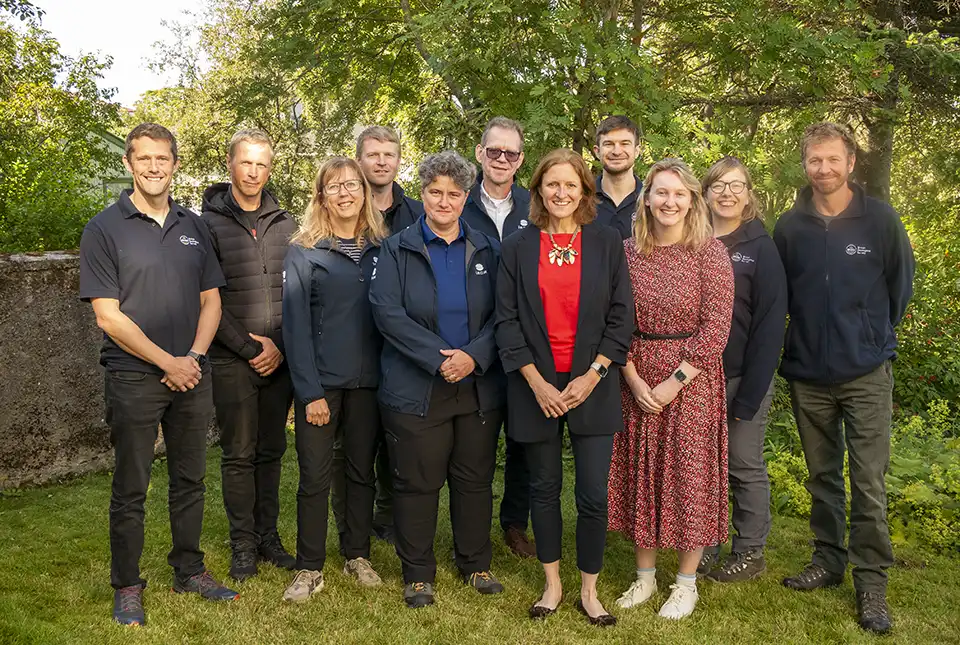
BGS collaborates with Icelandic colleagues to assess windfarm suitability
03/10/2024
Iceland’s offshore geology, geomorphology and climate present all the elements required for renewable energy resources.

Mining sand sustainably in The Gambia
17/09/2024
BGS geologists Tom Bide and Clive Mitchell travelled to The Gambia as part of our ongoing work aiming to reduce the impact of sand mining.


